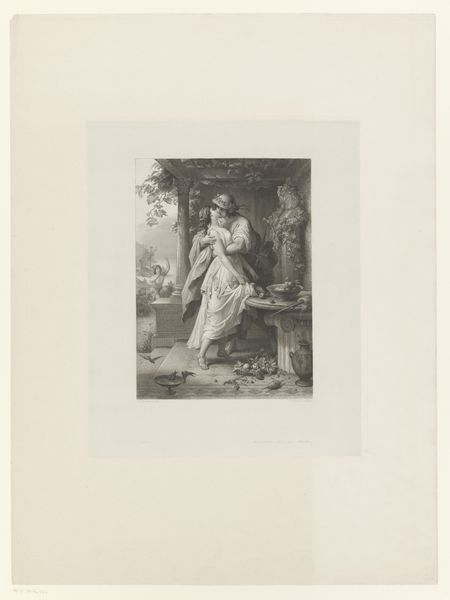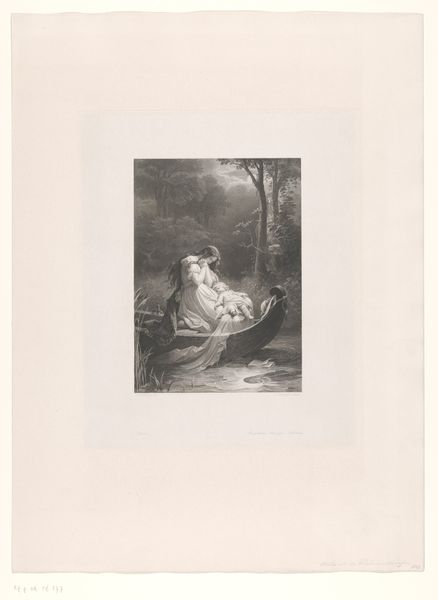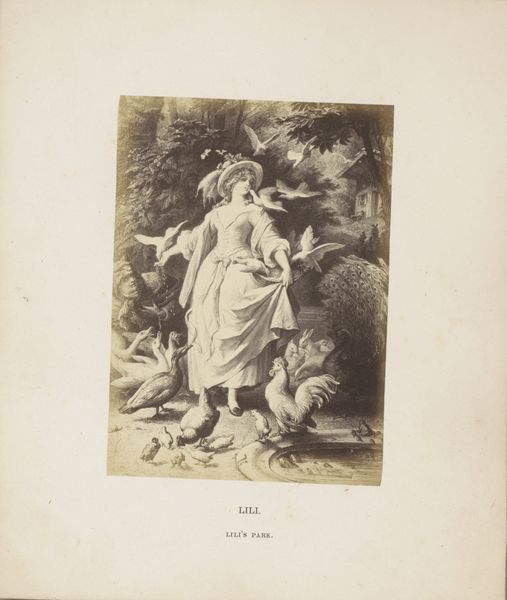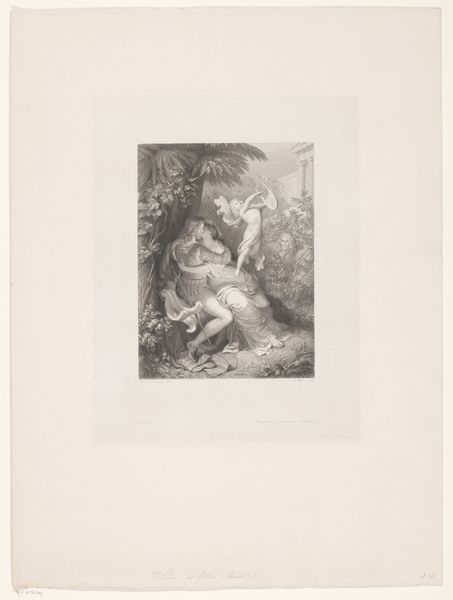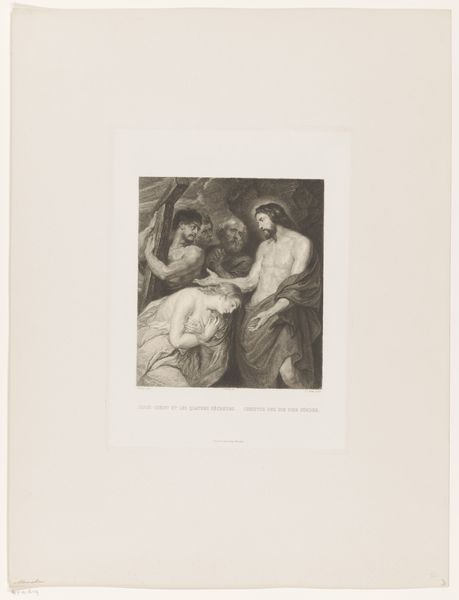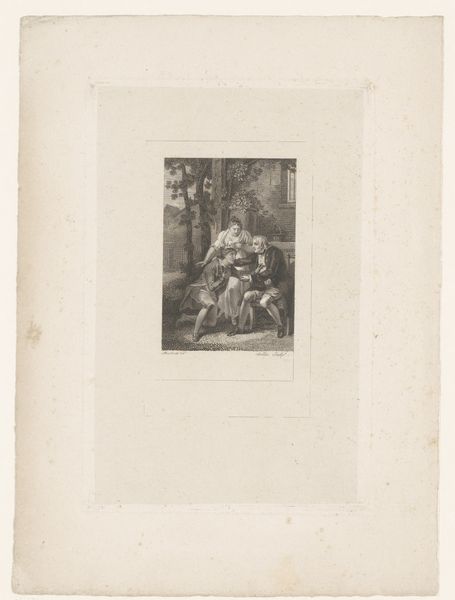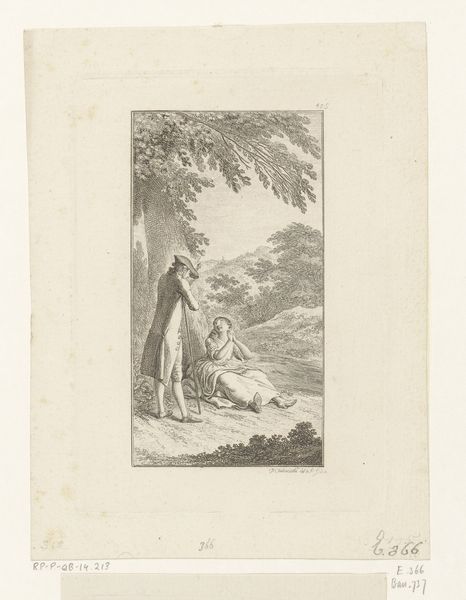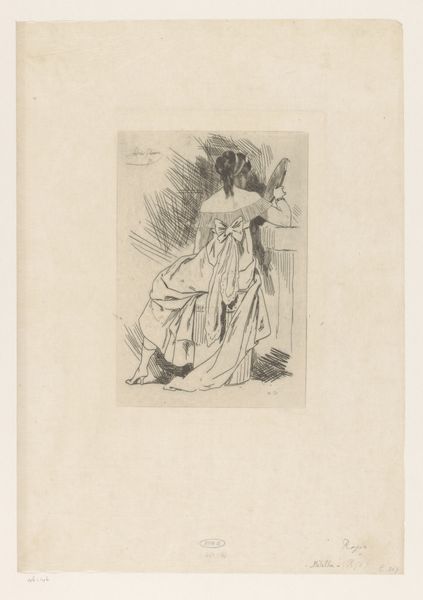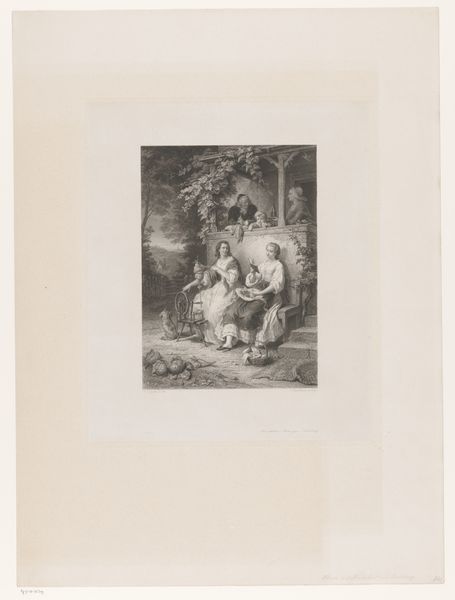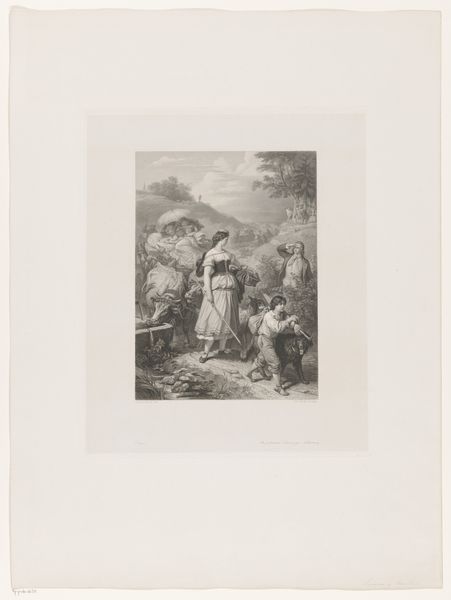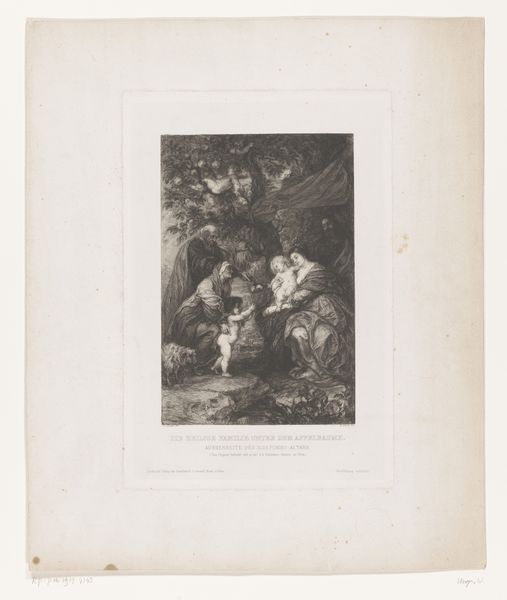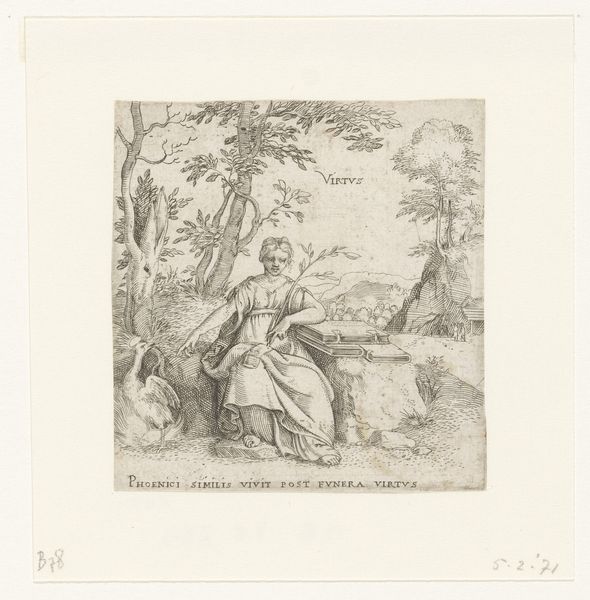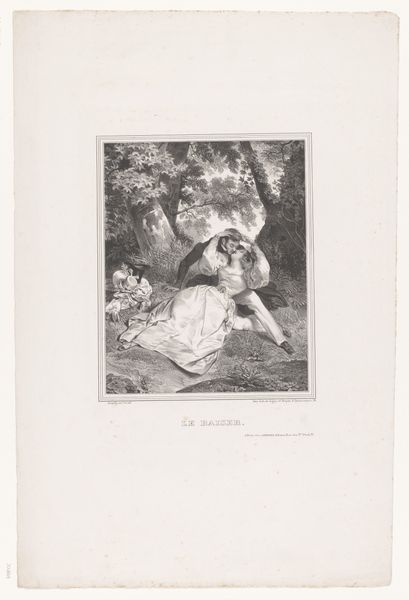
Lili voert duiven en andere dieren terwijl ze wordt bekeken door een man vermomd als vos 1862
0:00
0:00
Dimensions: height 432 mm, width 354 mm
Copyright: Rijks Museum: Open Domain
Editor: Here we have Albrecht Schultheiss’ 1862 engraving, “Lili voert duiven en andere dieren terwijl ze wordt bekeken door een man vermomd als vos” which roughly translates to "Lili feeds pigeons and other animals while being watched by a man disguised as a fox". The scene feels very staged, and maybe a little…creepy? What do you see in this piece? Curator: It’s an intriguing work, isn't it? The romanticized, almost idyllic image of Lili feeding the animals, contrasted with the lurking figure in a fox costume, presents a tension that speaks to broader social anxieties. The 'genre painting' element normalises social hierarchy; who is Lili to this hidden observer, and what power dynamic is at play? What does the fox costume symbolize in the context of 19th century Germany? Editor: That's a fascinating question! The fox could represent deception or trickery. Does the Romantic style perhaps suggest a commentary on societal expectations placed upon women? Curator: Precisely. The setting, almost theatrical in its composition, prompts us to consider performance, especially for Lili. Her role seems to be carefully curated, suggesting that appearances can be deceiving and that power often operates behind the scenes, unseen but influential. Is Lili aware of her observer, or is this ignorance central to the work? Editor: I hadn't thought of it that way. I was initially focused on the literal scene, but now I see the potential for so much more interpretation, focusing on identity, gender roles and perhaps a bit of power and social politics. Curator: And remember, it is equally crucial to consider that Schultheiss could well be using the ‘hidden observer’ figure as an analogue for the viewing public, encouraging a moment of personal reflection as much as offering direct political criticism. Editor: This has completely changed how I understand this image. It's not just a simple scene of a woman feeding animals. It’s about power, perception, and social expectations, all masked within a seemingly charming tableau. Curator: Indeed, art invites us to continuously question, analyze, and reconsider.
Comments
No comments
Be the first to comment and join the conversation on the ultimate creative platform.
